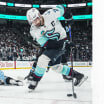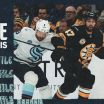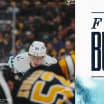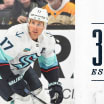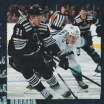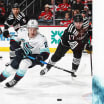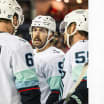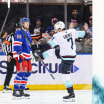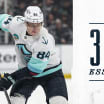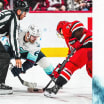If you look at a post-game stat sheet in the NHL, there are 22 columns of possible data for each skater. However, when it comes to goaltenders, the only data available on an official score sheet is how much time a netminder played (by strength) and how many shots they faced compared to how many goals they let in (by period).
Analytics with Alison: Sizing up Goaltending
Statistics can be limited when it comes to goaltenders, but new ways of analyzing NHL goalie metrics are being developed
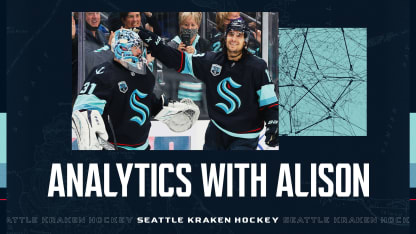
You can manipulate this raw data in a few ways, of course, but when it comes to public data, the information we commonly use to "measure" goaltending has always seemed far more limited compared to how we evaluate skaters.
The two most commonly available numbers are save percentage (SV%) which divides how many shots are stopped compared to shots faced; and goals against average (GAA) which measures how many goals a goaltender allows for every 60 minutes of play.
But there are problems with these numbers. First of all, when it comes to save percentage, only pucks that go in the net or are stopped by a goaltender are counted. Yep, you read that right. A puck hits the post? Not a shot. A puck flies wide and the goaltender has to move to possibly play that puck thus challenging his position for the next play? Not a shot. And for both SV% and GAA, there's no accounting for how well the team in front of you is playing, or what kind of shots you're facing. This is something Philipp Grubauer has thought about when it comes to defining how dangerous a scoring chance is.
"How do you separate if somebody shoots from the blue line versus when there's a guy in front of me who tips it," Grubauer said. "That's a scoring chance because the player tips it - it may or may not be seen as high danger, but there's a difference there too."
So, the question remains: are there better ways to measure goaltenders?
Let's dig in.
First off, can we find a way to measure the quality of shots faced? We at least have a starting point. Public sites like NaturalStatTrick.com, MoneyPuck.com, Evolving-Hockey.com, and HockeyViz.com all have "expected goal" (xG) models. xG assigns a "value" to a shot based on where it came from, game state, was there a shot(s) immediately before, and who took the shot (among other variables - every model is slightly different). We can turn that model around and look at shot quality against (xGA) to see what kind of quality a goaltender faced. So, by looking at xGA now we have a way to understand a goaltender's workload.
How does a goaltender respond in the face of that? Here's a few numbers that seek to find the answer.
Natural Stat Trick and Evolving Hockey both provide "Goals Saved Above Expectation" (GSAx) which measures the difference between how many goals an opponent was expected to score versus how many a goaltender actually allowed. Evolving Hockey also does a similar calculation except using save percentage, if that's your preference. It's called dFSv% and again, it looks at how much a goaltender's actual save percentage differed from what was expected based on shot quality.
Another stat out there is "Goals Saved Above Average" (GSAA) which attempts to answer the question of how much better a goaltender was than league average. This measure looks at the number of shots a goaltender faced, calculates how many should have been stopped using the NHL average save percentage, and then outputs the difference. This is a number Chris Driedger acknowledges can be helpful above and beyond traditional save percentage.
Some of these ideas you'll find on our post-game
Instant Analysis
which includes how many pucks a goaltender stopped (saves), as well as how the player responded to the difficulty they faced (goals saved). There's also an indicator for a "quality start" (when a goaltender faces a higher than average degree of shot quality and still beats expectations in terms of goals prevented); and an indicator for a "steal" which is when a goaltender prevents more goals than expected and that difference is greater than the final score.
Goalie stats still aren't perfect. Grubauer says he likes seeing different numbers being developed, but for him, they still don't always capture the whole picture of what goes into playing the position. That's why for Driedger, so much of how he evaluates goaltenders comes from watching a player's technique and how they look in net, "but those are less quantifiable," he says.
Acknowledging the uniqueness of goaltending and continuing to find ways to more fully evaluate it are important. We may not fully understand how to measure it yet, but we can stay in the hunt for better and better metrics while understanding the limitations of the ones we use today.





